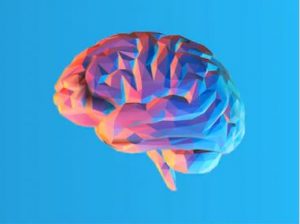Are you thinking about how much that flu shot is about to hurt? Trust me, don’t dwell on it. Your thoughts can play a defining role in how much pain we perceive and feel. Recently, a study published in Nature Human Behaviour showed that the brain learns when to expect a great measure of pain and then responds accordingly to it.

Image from ShutterShock
What exactly is pain?
Pain is defined as an unpleasant sensation and emotional experience linked to tissue damage. Its purpose is to allow the body to react and prevent any further damage. In the following TED-Ed talk, Karen D. Davis describes the pathway of how pain is felt in our body and why the “pain experience” varies from person to person.
Painful! Or is it?
The study conducted at the University of Amsterdam explores how the brain can learn when to expect a great pain and adjust its response accordingly. Neuroscientist Marieke Jepma and her colleagues gathered 62 brave volunteers to participate in her research. To begin, a small patch was placed either right below the elbow or knee of the individual. This patch contained an electrode which could heat up to a certain temperature to inflict pain. The individual then had to lie down in a magnetic resonance imaging (MRI) machine, which uses magnetic fields to scan brain activity. Next, a screen would signal each time the pain they were about to experience would be extreme or more bearable. Before and after each instance the patch was heated, the participants were asked to rank on a scale from 1 to 100 how much the pain would hurt and how much it actually hurt.
When the screen suggested the incoming pain would be very bad, the participants rated the heat as quite painful and when it suggested the pain would be bearable, they rated the heat as less painful. The MRI scans showed a similar pattern. After a signal for high pain, the brain activity acted as if the pain was bad. Following a cue for low pain, the brain responded as if the heat was less painful. However, in reality the electrode temperature remained constant each time. The results showed that the participants’ rankings — and their brains — had responded based on what they had been taught to expect. Jepma concluded that not only the perception of pain is biased but also the brain’s response.
So can we just ignore it?
Well, not entirely. Jepma further explains that her team’s work isn’t to say that the pain is all in your head. The pain is real and relays important messages to the brain. Further research in this field can potentially help doctors find methods on how to better treat pain. For example, being able to change expectations could improve patient responses to drugs for pain. Next time, in order to ease the pain you might want to think twice before you react.
Edmund Kwan
November 11, 2019
